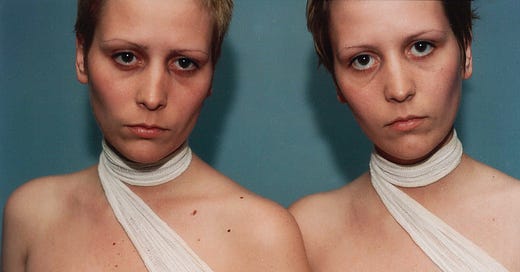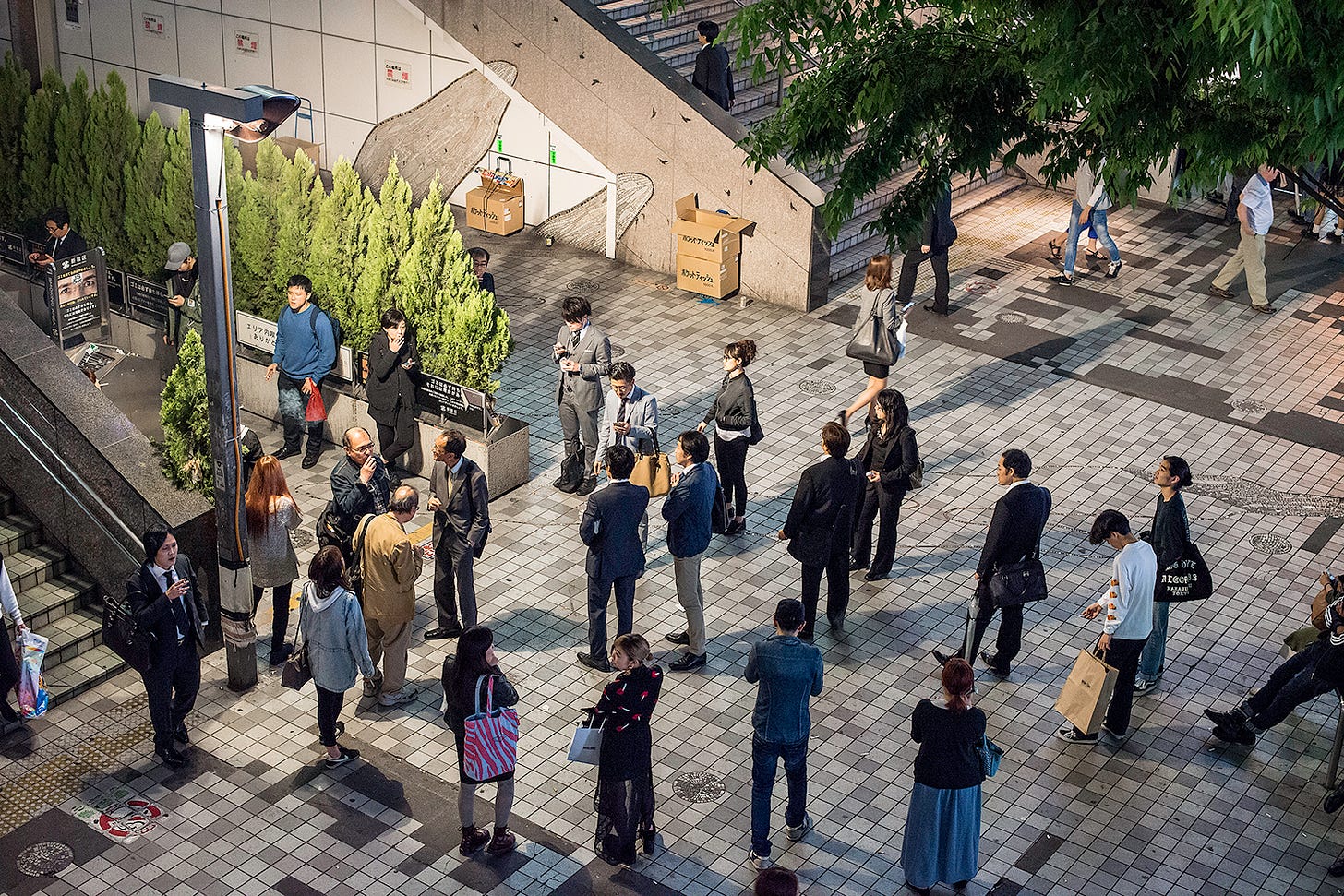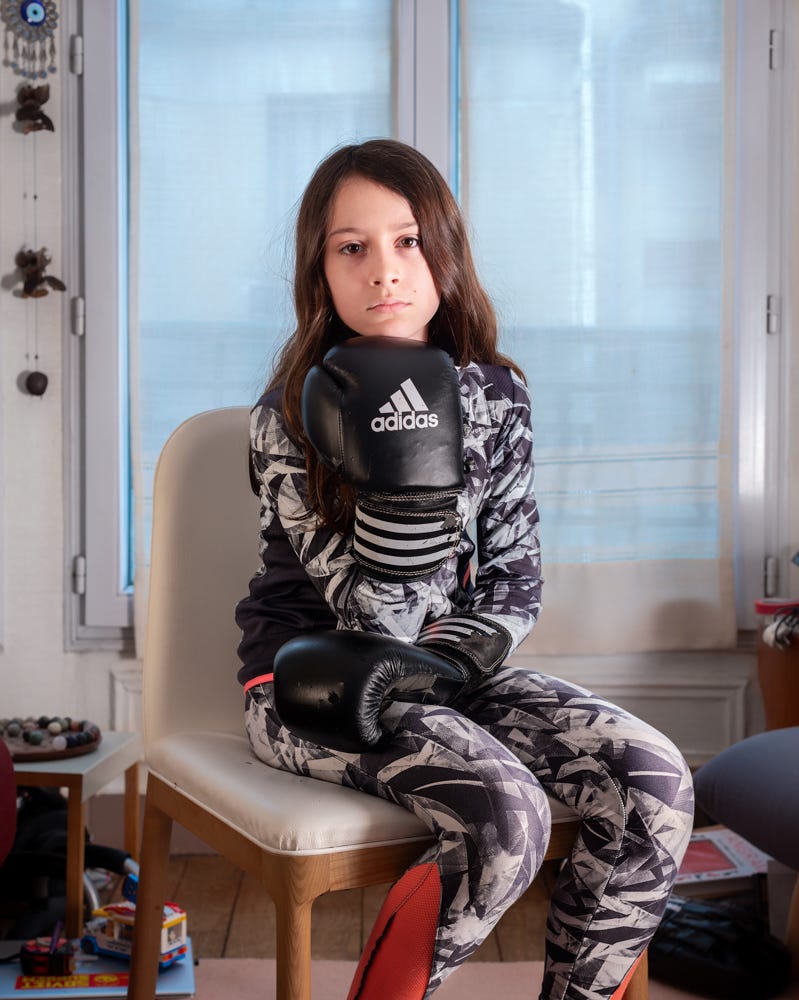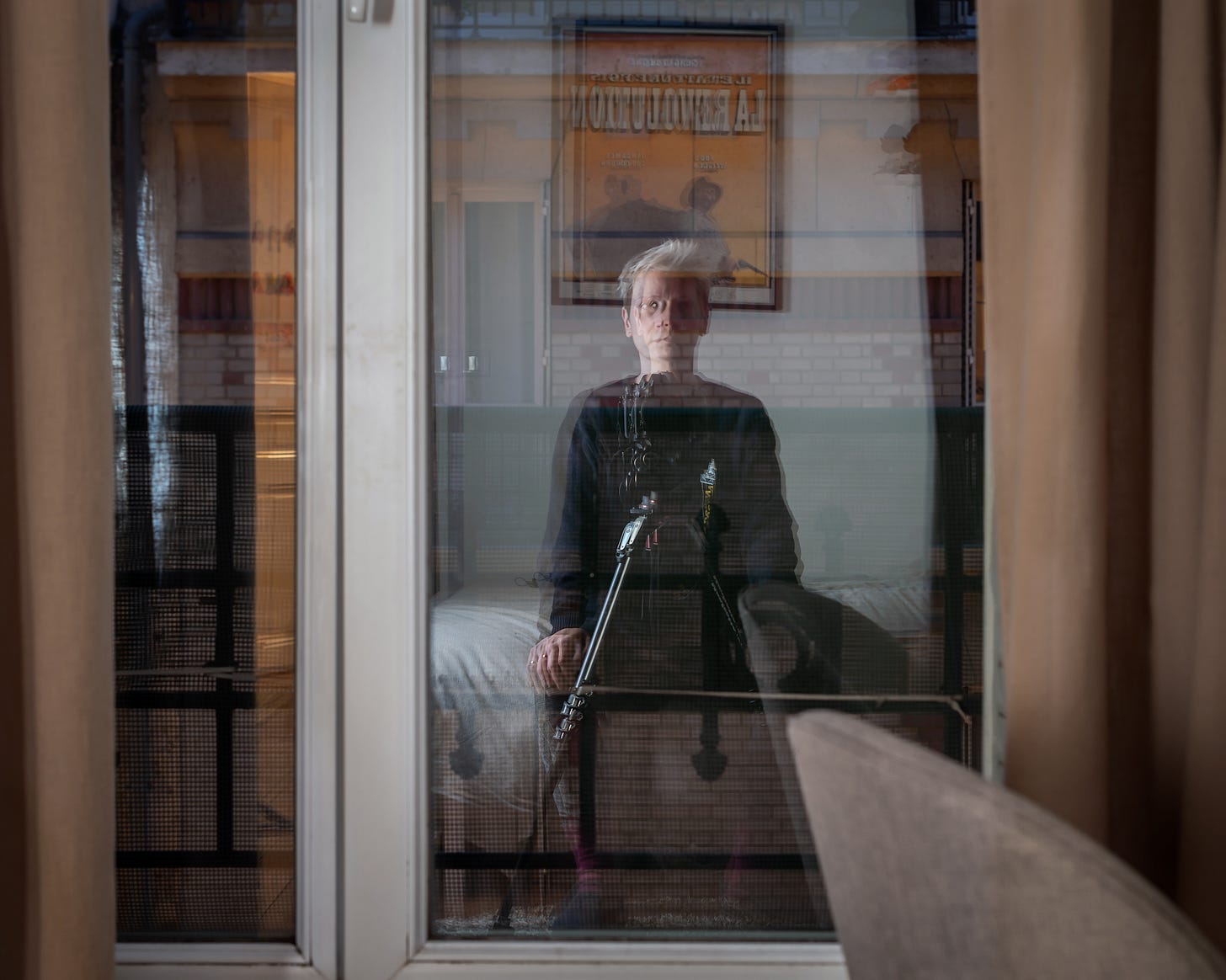Setting Boundaries With A Camera As A Shield
Chatting with Tarantula’s feature artist of June, photographer Tijana Pakic
Tarantula: Authors and Art is in the business of “spinning nuanced threads of art, stories and a tiny bit of hedonism to spark a moment to ponder.” We are a reader-supported publication. To receive new posts and support our work, consider becoming a free or paid subscriber.
The story of the Serbian photographer Tijana Pakic with a residence in Paris, France starts as most of our stories, in her mother’s womb. And as most of us develop in symbiosis with our mother and rely on her body, it wasn’t this connection that defined what kind of artist Tijana will become; it was the other embryo developing side by side with her, fighting for a bit of space inside of her mother’s uterus. With four hands and four feet, two heads constantly intertwining in the ammonia sac, it is no wonder that as soon as Tijana took her first breath, the question of where she as an individual begins and where does she end was immediately on her mind. The tug of war between freedom and dependency with her twin sister, Miljana, left an imprint on her as a person and as an artist; thus the question of identity as well as the boundaries between the private and the public are visible in her works of art.
Tarantula: Do you remember the moment when you decided to experiment with photography?
Tijana Pakic: I got into photography through music actually. I was obsessed with music, but I never played an instrument. My older brother was a big fan of Depeche Mode and Kraftwerk. When he bought their records, he wanted me to pay attention to the covers. Some were made by the Dutch photographer, Anton Corbijn, who also directed DM’s videos. His visual world was different than anything else I saw on MTV. I decided to try to do something similar, so my father bought me my first camera when I was 16. I started taking staged pictures of my sister and a friend in the park. We were Goths and went to many clubs in Paris.
How much did it help you in the beginning that you had a twin sister that you could take photos of and who was willing to play with you?
I took many photos of her in the beginning, so it helped. What is also interesting with photography is that I wanted to find something that belongs only to me and not my sister. Photography was supposed to separate me from her, but at the same time I kept involving her in everything that I did.
Photography was your tool to self-discovery?
I believe so. However, for a moment, my sister Miljana started taking photography classes, and I was quite angry at her for trying to enter what I thought was my own world. Eventually, she found her own place in film and SFX as a make up artist. That was great because we discovered that we needed each other in work also, and not just in life.
What inspires you today when you take photos?
For the first time ever, I am working on three projects simultaneously that are quite different from each other. Actually, they are similar in a way that I am dealing again with portraiture, the question of humanity, but in three different ways. I am working on a project called Digital Natives, where I am taking photos of children between 7 and 11 who belong to the digital generation. This work celebrates human diversity instead of manipulating it. What I mean by manipulating is editing and improving images of ourselves by using simple Apps and filters. With my second project with a working title Where Ever You Will Find Me, There I Will Be, I am trying to explore motherhood by taking photos of my daughter Naima. And I am also returning to the project that I started 20 years ago, some kind of a Self Portrait that I am working on again with my twin sister. I have a different approach to all three projects but I am always questioning identity as well as touching upon the hidden psychology of the individuals involved.
What’s interesting in your works is that after two decades you are still dealing with the intimacy of portrait, but on the other hand, you also started photographing big crowds of people, like in your series Japon or in Paris. There is a fine line between the public and the private in your works.
When I started doing Japon, I just wanted my intuition to lead me in the exploration of this new place that I visited with my husband. I purposefully kept a distance from my subjects. I brought only a 50 mm lens with me, the lens that is most like a human eye, I didn’t want to take pictures of details and I purposefully wanted to avoid any kind of communication with people that I photographed.
A little voyeuristic?
Yes, I was a total voyeur. This is also a new approach for me as previously I always had a need for an exchange with my subjects. This project is important for me because I returned to photography after a long pause. It was a sort of an awakening. I woke up in Japan but I wasn’t still completely awake. It is not an accident that it happened in a culture and environment that are completely foreign to me.
In your earlier works, you used to stage your photos, almost like film shots, but even when I look at your photos with the crowds, despite you having a more passive voyeuristic role, they also seem staged.
That was the idea that led me. I took about 2000 photos on my two trips to Japan, and edited them to twenty photos that are now in the series. What was interesting in Japan is that I had this feeling that the people functioned in a different state of mind than what I am used to.
Can you explain more?
Just like that, as if they are in more harmony with the place so everything seemed staged to me… or …. sometimes I felt that they sensed my presence, that I was standing there with my camera and that they deliberately participated.
Like some kind of performance or silent dialogue between you and them.
Yes, like some kind of performance without a previous agreement. That’s what I strive for when I take photos of people, there is some kind of magic in it.
Where is the magic? What is it that you really want to capture with your photographs?
The magic is not obvious in the photos, it’s hidden. It is the energy between me and the model, which I entice out of them, and vice versa. I am happy when someone notices that magic in my work.
How did this corona year influence your creatively?
I was in the middle of the Digital Natives project which slowed down completely due to corona. I was taking photos of children and in the first lockdown in Paris all the schools were closed and it was impossible for me to get to them. In that first lockdown, when we were able to go out only for an hour, I started photographing each day inside our apartment, without any clear idea or plan. That resulted in a series that I call 54m2. That series has everything that I am about: portraits, objects, humour, drama. I wasn’t even sure if I can create a body of work from them; it was really like a mishmash of all colours of the rainbow. But it was playful and honest and people seem to react to them.
Even during the areal bombing campaign against Serbia in 1999, when you took a few models into an abandoned bus and the police came to warn you that you should go into a shelter, you said that photography and holding that camera was what saved you. Do you think that the camera, as an object, had a similar role during corona?
Definitively! it was the same need and urge. It is easier for me to function that way because these are situations that I can not change. I can not change the bombing or the pandemic. It’s very subconscious though.
Like a shield between you and the situation?
Yes. It’s a shield, a defence mechanism for me during these two situations.
This corona year was actually a good one for you in terms of your own creativity by entering different web contests.
Yes, yes, I had a good year. Thanks to Instagram, one of my photos from 54m2 made it into the group exhibition Global Images For Global Crisis curated by David Campany and the team at the International Center of Photography in New York. That was a great personal success. My photo is now in the museum’s archives. I just imagine someone in 300 years looking at it and listening to my audio statement about this historical moment. It’s a great feeling.
What is the thing that excites you the most right now?
Interesting question. You know what excites me. Working on myself. I started to meditate. I think that it can help my creativity but also how I interact with people, my reactions to my surroundings.
Can you recommend a good book, or photographer or a piece music that also excite you?
The pandemic gave me an opportunity to reach out to people to whom I would have never dared to contact before. I had a great conversation with an English photographer Mark Neville. Thanks to our two conversations, I started to see the potential in 54m2. Also, a photographer who I really like, Alec Soth, started a Youtube channel during the lockdown in which he was showing photography books and giving his subjective opinion about them. I also really like to watch and to listen to the American photographer Stephen Shore. He is not only an excellent photographer but a wise men, so eloquent!
What is happening next for you?
I just finished the first version of the book Digital Natives with a foreword by Mihajlo Vasiljevic. In September, I am flying to Belgrade, Serbia as I will take part in an exhibition at the Remont Gallery.
Can you give our readers a photo challenge in case they would like to go out and takes some photos on their own this summer?
I don’t want to tell people what to shoot, I would just like to inspire them to open up their eyes. Actually, we are often not aware what’s around us. I had an 8 year pause and I realized that I don’t see anymore. Once you enter the process, you start experiencing your environment in a different way. It’s more of a meditative task that I would encourage your readers to take on than a photography challenge.
Is there a physical way that they can accomplish that?
Have any kind of camera with you, could be a phone. Take photos of what attracts you all day, do it over a period of time and after some time review all your photos. What do you see?
To find out more about Tijana Pakic’s Art, visit https://tijanapakic.com or her Instagram page @tijanapakic








